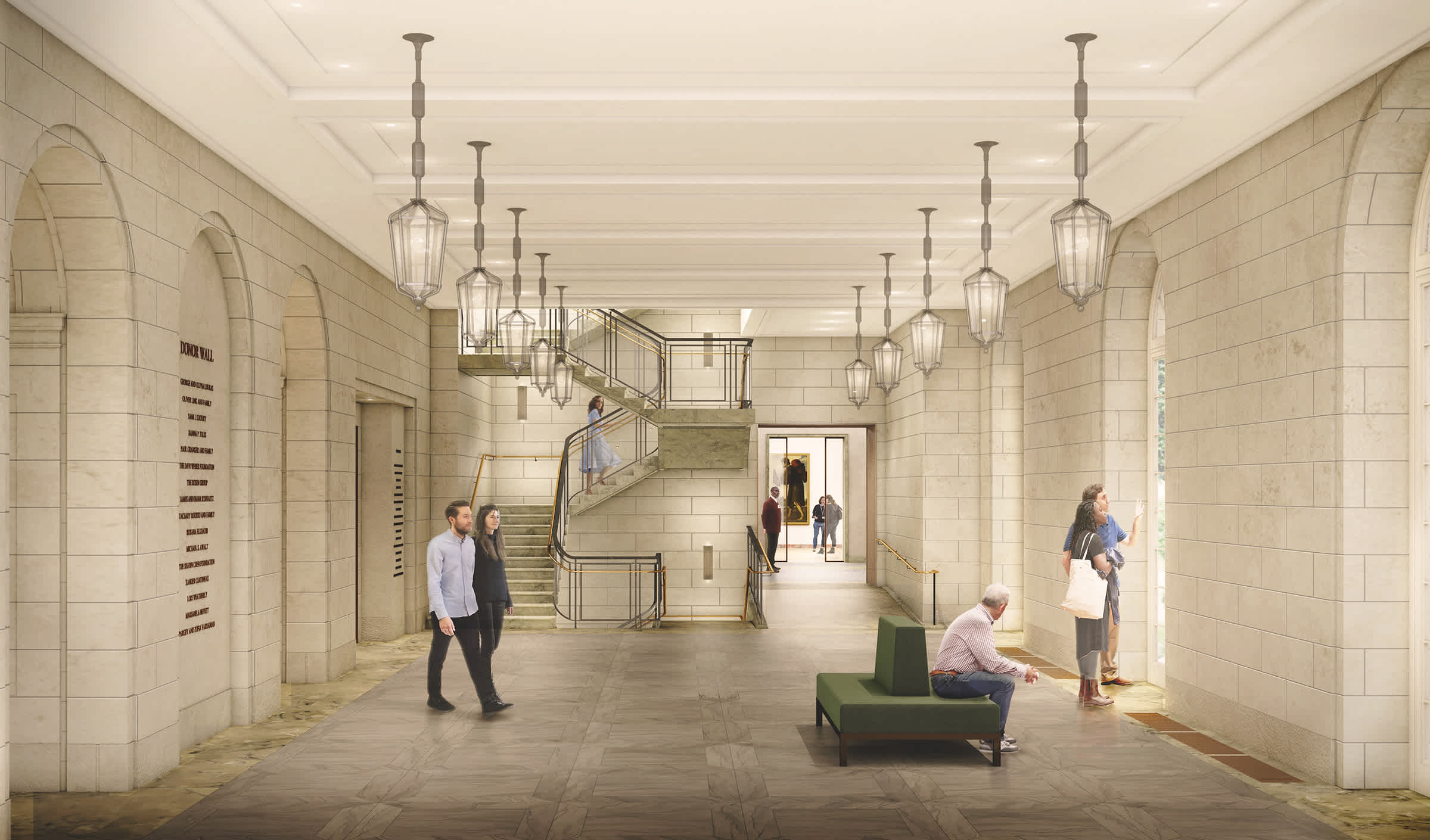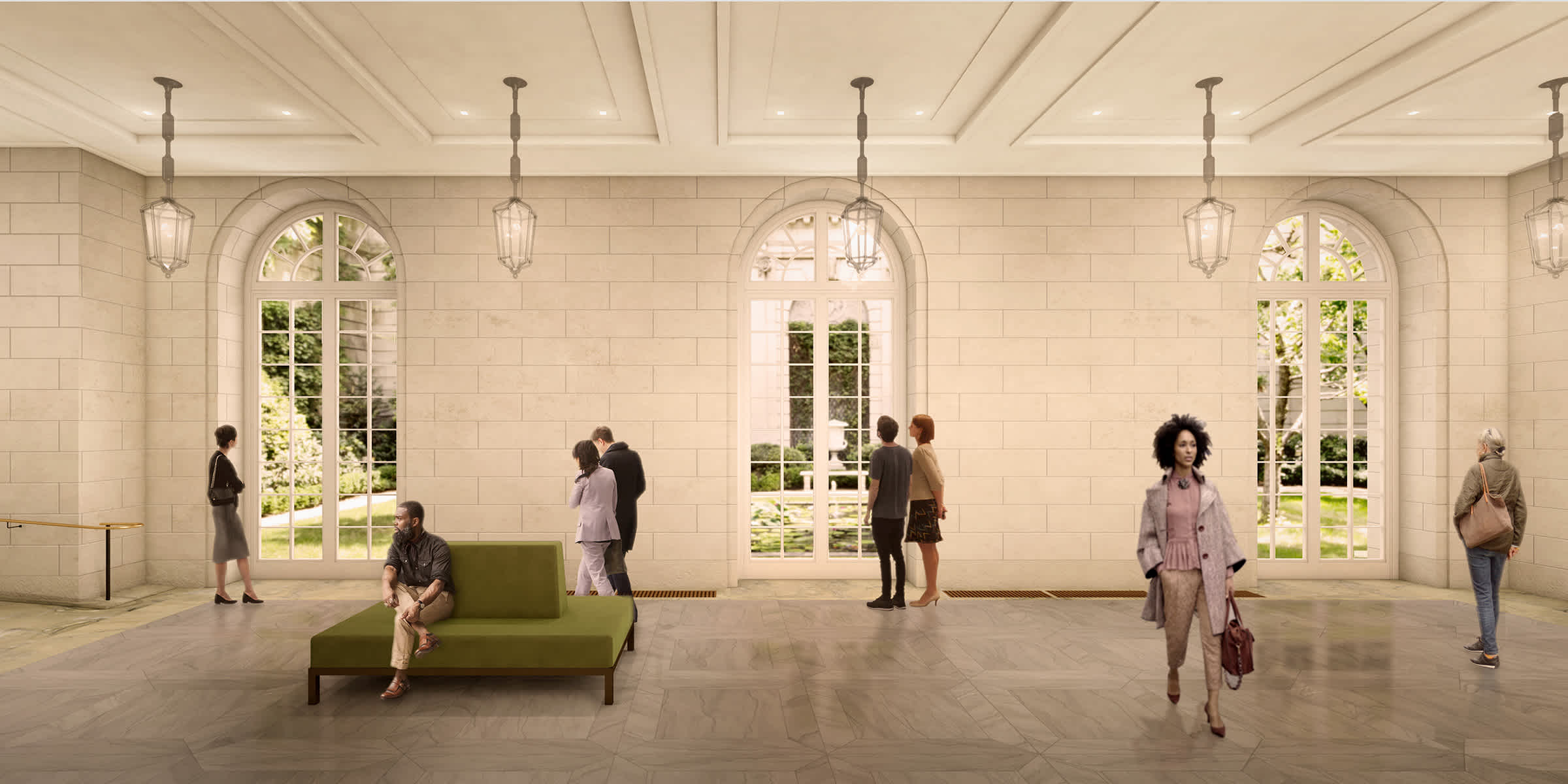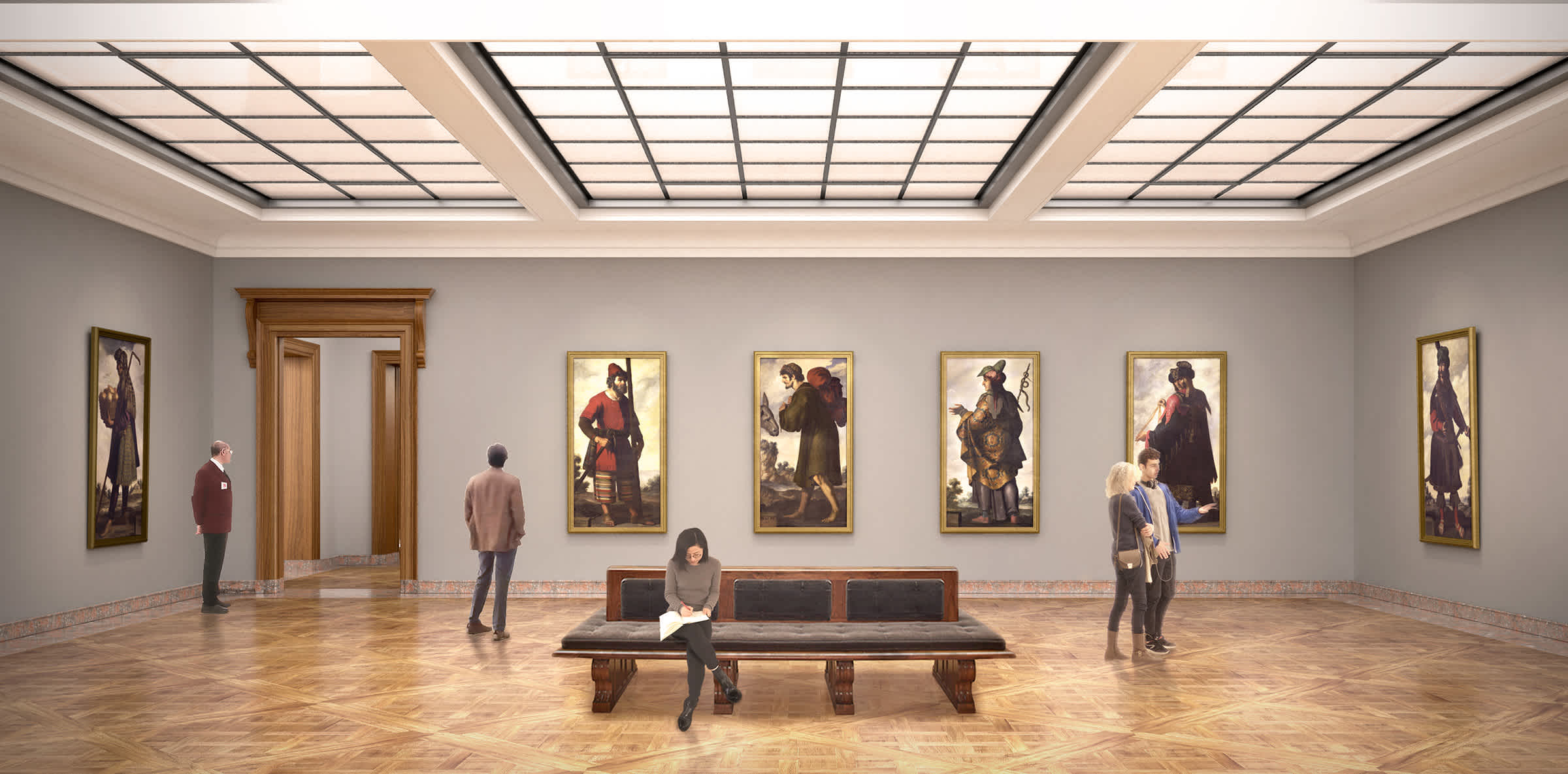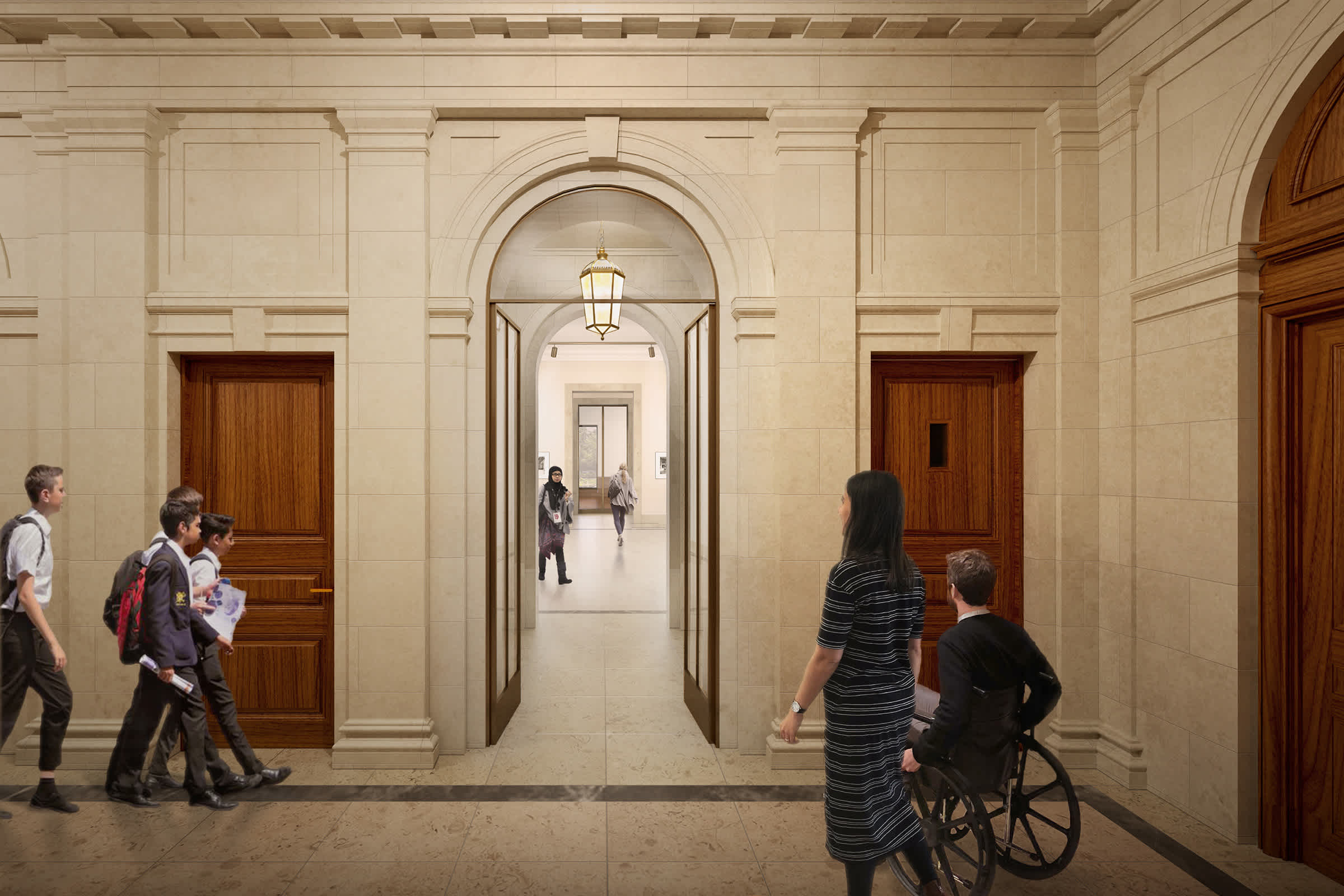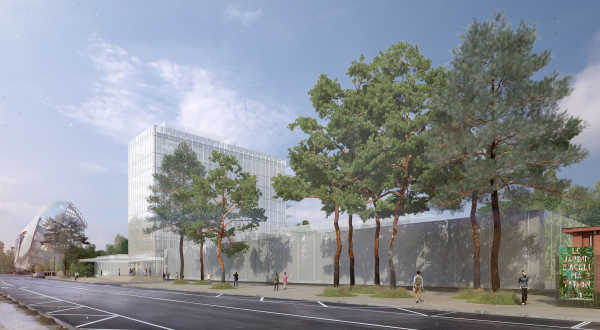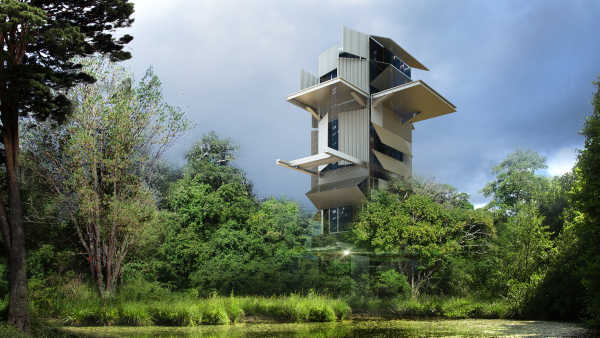Honoring the architectural legacy and unique character of the Frick, the design plan by Selldorf Architects (Design Architect) and Beyer Blinder Belle (Executive Architect) provides unprecedented access to the original 1914 home of Henry Clay Frick, restores the 70th Street Garden, and provides a seamless flow throughout the Frick’s exhibition galleries, library, and public spaces for visitors and staff alike.
Visitors approaching the Frick from Fifth Avenue or 71st Street will notice minimal changes to the exterior. The plan respects the current scale and height of the Frick’s buildings, which comprise the original three-story house designed by Carrère and Hastings, and the adjacent seven-story-high library building, designed by John Russell Pope. From 70th Street, the back of the library building—which today is visible above the garden and is cluttered by a large, metal exterior fire escape—will be expanded slightly to recapture unused space in a rear service yard behind the garden and enhanced with a new limestone façade. This will create a finished, integrated appearance and complement the facades of the original Frick buildings.
Visitors will continue to enter the Frick through the original 1930s museum entrance on 70th Street and will move from the main entrance hall into a more open reception hall. Originally built in 1977, the reception hall is being reconfigured for better public circulation through the general admissions and information areas. From the reception hall, the public will now have the choice of three possible routes through the museum:
On the main floor, they may proceed as usual from the reception hall into the Frick’s Garden Court and permanent collection galleries, which will remain unchanged. Alternatively, they may go directly to a newly created special exhibition area, including a large gallery and two smaller spaces. This new gallery will enable the Frick to continue offering the kind of acclaimed shows for which it is known without having to remove from view larger works from the permanent collection, as must be done currently. The reception hall also will provide access to the second floor via a new bank of elevators or an elegant new staircase—a nod to the signature Grand Staircase in the Fricks’ original home, which will also be open to the public for the first time. On this newly created level above the reception hall (achieved by raising the present roof by only five feet), the public will be able to enjoy a contemplative seating area with a view of the garden, museum shop, and the institution’s first café.
Visitors will have access, for the first time in the institution’s history, to a suite of rooms on the second floor of the original Frick residence, which will be transformed into gallery spaces.
Formerly serving as the private living quarters of the Frick family before being converted into administrative offices in the 1930s, these historic rooms retain many of their elegant architectural details and decorative finishes, including fireplaces, mahogany paneling, a series of Edwardian chinoiserie painted ceilings, and the Central Park views so enjoyed by the Frick family. Of more intimate proportions than the grand main floor rooms of the original home, these newly created galleries will enable the Frick to better present some of its smaller paintings and drawings, and bring out of storage more of its growing holdings in the decorative arts.
The design also provides the Frick with purpose-built spaces for its public and educational programs, including a dedicated main-floor education center. Visiting school groups are among those who will benefit from this facility, which will include classroom and orientation spaces as well as a group entrance. The education spaces will provide a link and public passageway between The Frick Collection and Frick Art Reference Library, enabling visitors and students to move easily between the buildings for the first time without having to exit the institution. The library will be enhanced with a new digital art history lab and new public space for research and programs. Additionally, a new 220-seat, state-of-the-art auditorium will be created underground, mostly by transforming existing multilevel basement areas currently being used for storage and old infrastructure under the 70th Street Garden.
ADA access will be upgraded throughout the Frick. These improvements include new ramps at the public entrances to the museum on 70th Street and to the library on 71st Street. Two new ADA-accessible elevators will provide access from the reception hall to the upper floors of the former home and to the auditorium, restrooms, and coat check below.
Other key elements of the design include the renovation of core back-of-house facilities, including the addition of new conservation spaces for both museum and library collections. For the first time, the museum’s conservators, who currently use repurposed spaces in the historic home, will have up-to-date facilities added above what is now the music room and an art service elevator that will allow larger objects to be brought upstairs for treatment. Similarly, the conservation team of the library will have a modernized and far more efficient facility for their work, which is critical to the preservation of the library’s important holdings as well as the works of art on paper in the museum’s permanent collection. This conservation facility will include a lab for the digitization of the library’s collections to make them more accessible to users onsite and globally.
The Frick will pursue LEED (Leadership in Energy and Environmental Design) certification for the project, which encompasses critical infrastructure and systems upgrades to the Frick’s aging buildings. The project will improve energy efficiency and overall sustainability, with the goal of safeguarding the institution and its collections for future generations.
For for further information please visit https://www.frickfuture.org
Architect
Selldorf ArchitectsExecutive Architects
Beyer Blinder BelleStatus
In ProgressClient
Principal
Project Leader
Team
Photo Credit
Courtesy of Selldorf Architects

